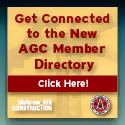
|
www.agc.org Contact Us Archives/Subscribe Advertise IT Forum IT Forum Steering Committee |
ECM: Electronic Content ManagementIntroduction Today, ECM technology can encompass ALL records, including scanned documents, drawings, e-mail, voicemail, and video, and even replace storing files (content) on a file server. This is a tall order, no doubt, but commercial-strength ECM solutions are up to the task. Imagine having all of your "content" organized and stored by software with rules on what content to keep and for how long, allowing you search capability on indexes or even within documents. Not only that, there are workflow tools that can allow users, or at least IT, to create routing, approval, and storage rules for different record types. There are other tools, too, which allow for OCR (Optical Character Recognition), electronic forms, and version control over documents. At first glance, this is more than most companies want to think about. It is nothing short of organizing ALL of your data and having an associated business process via workflow rather than manually. But most companies don’t tackle it quite that way. Historically they start small, with invoice routing and approval, maybe timesheets, and work their way up to HR and equipment records. They also handle the integration with the ERP system fairly early on, too, as that step is critical for efficiency – otherwise, you have to enter index values on each record. From there, companies move to implement electronic forms, add retention rules, and start to do e-mail archiving. Or they don’t. Sadly, some companies stop with invoice routing and approval and think they are done. Little do they know that that is just the tip of the iceberg when it comes to the value of ECM. This is ultimately technology that will be long lasting and can potentially have a significant impact on the organization. For that reason, companies should be integrating an ECM technology as part of their overall IT plan. Companies should plan on investment and time commitment over the next three to five years to deploy this technology well and at a rate consistent with the needs and abilities of the organization. Overbuying would be nearly as problematic as under-buying. The stage should be set at the appropriate level and then worked on consistently over time. At present, there appears to be four broad approaches to ECM technology within construction: 1) an integrated approach within the ERP or other application; 2) a stand-alone approach with an ECM product developed for the industry or a more generic one; 3) developing a level of ECM within SharePoint; and finally, 4) none (hoping perhaps it is a trend and will subside). We will not spend much time on option 4, assuming that if you are reading this you have already implemented 1, 2, or 3 or are contemplating doing so. There are benefits and drawbacks to each approach, and this article will go on to provide some detail around each. The article concludes with a few points on implementation of this technology. SharePoint Contractors who are evaluating or implementing SharePoint solutions within the organization would benefit from taking a step back and looking at ECM as a whole. Considering SharePoint from this perspective may help solidify the organization’s goals and objectives and determine where SharePoint may fit into the overall IT strategy of the company. While SharePoint contains elements that can either enhance or replace some of the more basic ECM functions, it is more difficult or nearly impossible for SharePoint to be a true ECM replacement. Some argue it is another general purpose application, admittedly powerful, that can clean up and organize many a cluttered shared drive. However, once a company starts to build on the features and functions needed, they start realizing how time consuming that can be and begin to wonder if a prepackaged application doesn’t already exist. Structure/Discipline Most companies will benefit from the assignment of someone to the task of ECM champion or records manager. These titles may sound like hold-over positions from the robust market we enjoyed a few years ago, but don’t leap to that conclusion. An ECM champion, someone with business experience, records knowledge, and who is slightly technical, could go a very long way to leveraging the value of your company’s investment in an ECM system. Without that person on board, many in the organization will develop departmental solutions that could work for their needs, but probably go no further. They also may not have a larger concern for the policies and procedures that are so critical to effective deployment of the technology (e.g., records retention rules, security). Exhibit 1 is an example of a catalogue of fields possibly required for each record type in an ECM system. So for a time card, say, or an invoice or HR application, someone needs to define what happens to the document and when, where it is stored and indexed, how long it is kept, and who needs to see it. This information would then be captured and/or used by the system when treating each individual record. As you can see, there is a lot of information required and it is all important to an ECM system. For these reasons, the records manager is likely to be more effective at deploying this technology, though they do not do it by themselves. The person in this position, or the ECM champion, would work closely with the "custodian" of a given record type, for example the HR manager for all HR-related documents and records. ECM technology is one of the more profound technologies emerging in construction. It may not have the "sizzle" of BIM or Cloud Computing, but it is also one of the technologies to provide a quicker ROI, something to consider when evaluating IT investments. Plan accordingly with a three- to five-year window. Don’t underestimate the needs of the organization. And finally, implement well with appropriate commitment and staffing. About the authors Steven J. Mulka is a founding partner of Microsoft Dynamics Gold Certified Partner SIS Software, LLC. He has more than 15 years of experience in providing financial and operational software solutions to support the A/E/C industries. He is also the Product Manager of the SIS Compass product, which provides a preconfigured SharePoint solution for project management built on Microsoft SharePoint Technology. Steven can be reached at smulka@sisn.com, and you can learn more about SIS Software at www.sisn.com. |

2300 Wilson Boulevard, Suite 300 · Arlington, VA 22201 · 703-548-3118 (phone) · 703-548-3119 (fax) · www.agc.org
About AGC | Advocacy | Industry Topics | Programs and Events | Career Development | News & Media
© Copyright 2025 The Associated General Contractors of America. All rights reserved.

